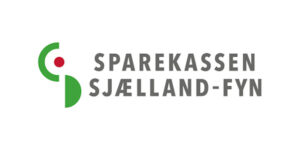Læs hele kongres rapporten her:
The imposition of a fiveyear, 15 percent quota on steel imports, as called for in H.R. 5081 and S. 2380, would increase prices, output, and employment in the domestic steel industry but would generate offsetting losses in the rest of the economy. The quota would release substantial sums for investment in the domestic steel industry, although it is questionable whether this would suffice to raise investment to the level that the industry claims is necessary to restore its competitiveness.
Moreover, there is little prospect that the quota would reverse the secular decline in the industry, since it does not address the underlying factors that have conditioned this decline.
CONDITION OF THE U.S. STEEL INDUSTRY The industry is currently emerging from very depressed conditions in 1982 and 1983, the worst years of the postwar era for U.S. steel producers. In 1982, the industry operated at less than 50 percent of capacity. Ship ments and production were lower than at any time since the late 1940s.
These conditions precipitated substantial layoffs and industrywide operating losses of about $2.5 billion. Production increased somewhat in 1983 but not enough to offset the 1982 downturn. Financial losses continued at the 1982 pace, and roughly 10 percent of the industry’s capacity was permanently retired. During 1983, the industry employed only 60 percent of the labor force it had engaged in 1979.
These conditions were exacerbated by record levels of import penetration, amounting to over 22 percent of domestic steel consumption in 1982 and over 20 percent in 1983. The industry showed significant improvement in the first few months of 1984, and most steel firms are likely to be marginally profitable in this year.
But employment has not increased greatly and imports continue to claim roughly 25 percent of the U.S. market.
H.R. 5081’s EFFECTS ON THE STEEL INDUSTRY
CBO has developed a model of the steel industry that makes it possible to estimate the approximate effects of the proposed 15 percent quota on steel imports. Projections generated by this model suggest that the quota might have the following effects:
o The average price of steel consumed in the United States would increase by about 10 percent.
o Domestic steel prices would be roughly 3 percent higher in the first year of the quota and roughly 7 percent higher in the fifth year.
o The price of imported steel would be roughly 34 percent higher in the first year of the quota and roughly 24 percent higher in the fifth year. U.S. steel consumption would decrease between l; and 5 percent.
o Domestic steel shipments would increase by about 6 percent. o Steel-industry employment would increase by 6 to 8 percent.
o The quota would transfer between $1.7 billion (in the first year) and $4.5 billion (in the last year) to the domestic steel industry in the form of pretax profits.
The quota would transfer between $2.3 billion and $1.9 billion annually to foreign steel producers, presuming the U.S. govern- ment did not seek to capture this sum through auctioning off import licenses or similar measures.
For steel firms and steel workers, therefore, the quota would have a positive effect. Output and employment would increase, as would steel- industry revenues. H.R. 5081 includes a provision requiring steel firms to invest “substantially all of the cash flow generated by the steel sector” in steel operations. Since the quota would increase steel firms’ pretax profits, it would increase cash flow and, according to the bill’s provisions, generate an increase in steel investment.
Since cash flow hinges on the tax status of individual firms, it is impossible to project accurately the increase in investment that would occur as a result of the quota. But given reasonable assumptions concerning future tax liabilities, it appears that the quota might raise steel industry investment by $1.5 billion to $2.5 billion annually (in 1983 dollars).
Steel-Consuming Industries. A 15 percent steel quota would lead to losses in employment and output, as well as higher prices, in steel- consuming industries, offsetting the benefits it would create in the steel industry. The quota’s effects would be particularly injurious to steel- consuming industries that face international competition, especially since U.S. steel prices are already roughly 20 percent above prevailing world prices.
Should foreign countries retaliate against the imposition of a steel quota by restricting a similar value of U.S. exports, the quota’s net effect on U.S. employment and output would be negative and substantial.
Consumers. Finally, the quota would impose costs on U.S. consumers (except those who work in the steel industry). While these losses are difficult to estimate, they would approximate the total transfer of income to domestic and foreign steel producers and related efficiency losses.
The quota would entail efficiency losses of approximately $0.9 billion per year. When added to the income transfers that occur as a result of the quota, this suggests that a 15 percent steel quota would cost U.S. consumers (outside the steel sector) between $4.3 billion and $5.9 billion, in 1983 dollars, for each of the five years the quota was in effect. These costs would rise over the duration of the quota.







